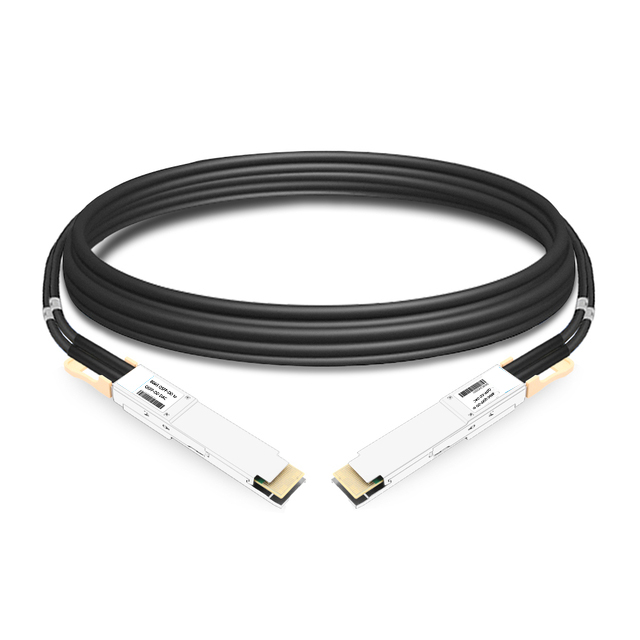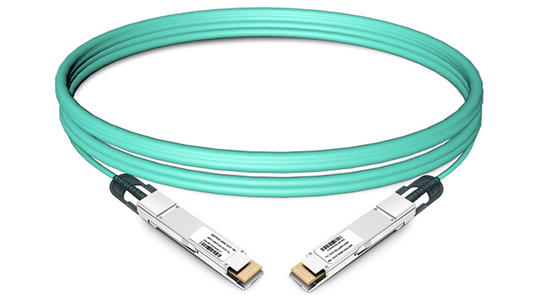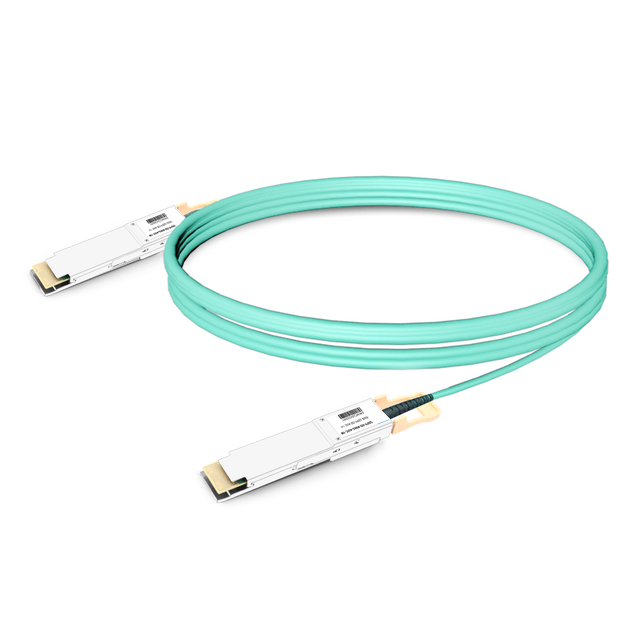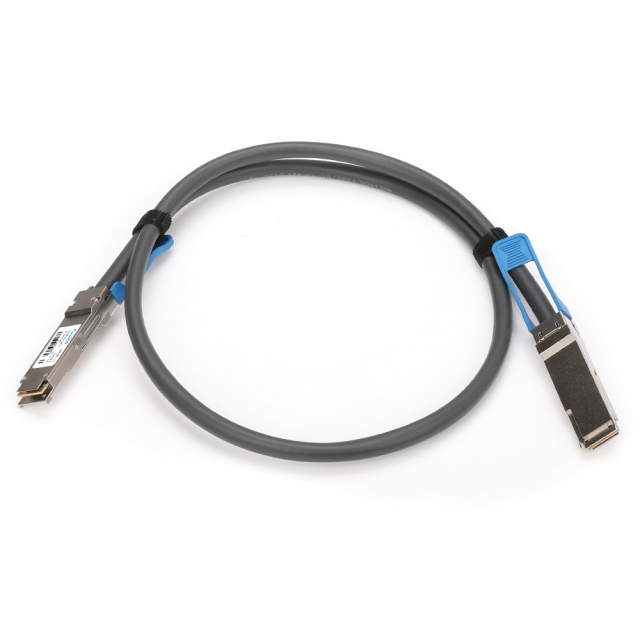Everything You Need to Know About 800G OSFP DAC Cables
In today’s hyperscale data centers and high‑performance computing (HPC) environments, bandwidth demands grow exponentially. As organizations push toward 800G networking to accommodate AI, machine learning, and massive data analytics workloads, the choice of interconnect becomes critical. Among the available options, 800G OSFP Direct‑Attach Copper (DAC) cables stand out for their cost‑effectiveness, low latency, and ease of deployment in short‑reach topologies. This article dives deep into everything you need to know about 800G OSFP DAC cables, from fundamental principles to practical considerations for your B2B data‑center deployments.
What Is an 800G OSFP DAC Cable?
An 800G OSFP DAC cable is a fixed‑length copper assembly terminating in an Octal Small Form‑factor Pluggable (OSFP) connector on both ends. Unlike active optical cables (AOC), DACs are passive (or sometimes semi‑active with minimal electronics) copper cables designed for short‑reach direct connections—typically up to 5 meters—between switches, servers, and storage arrays. The 800G data rate is achieved through eight electrical lanes of 100 Gbps each, aggregated over high‑quality copper conductors.
Key Features and Technical Specifications
Data Rate and Lane Architecture
Each OSFP 800G DAC uses eight lanes of 100 Gbps PAM4 signaling, ensuring an aggregate bandwidth of 800 Gbps.Connector Type
The OSFP form factor provides four pairs of transmit and receive lanes per side in a compact module, with robust latching for secure server‐to‐switch links.Cable Lengths
Standard passive DACs operate reliably up to 3 m; beyond that (up to 5 m), active DACs with embedded signal conditioning are often recommended.Power Consumption
Passive 800G DACs consume essentially no module power, while active variants draw less than 1 W, significantly lower than optical transceivers.Operating Temperature
Typical industrial ranges from 0 °C to 70 °C, with extended options down to –40 °C and up to 85 °C for harsh‑environment applications.
Advantages of 800G OSFP DAC Cables
Cost‑Effectiveness
Copper raw materials and passive designs make DACs substantially cheaper per port than optical alternatives, reducing CapEx for large port‑count deployments.Low Latency
Direct electrical pathways introduce minimal propagation delay—critical for real‑time trading platforms, HPC clusters, and latency‑sensitive applications.Simplicity and Reliability
Fewer active components translate to high mean time between failures (MTBF) and straightforward troubleshooting compared to fiber‑based links.Power Savings
Near‑zero power draw in passive cables and under 1 W in active versions help lower OpEx by reducing rack‑level cooling loads.
Common Use Cases
Top‐of‐Rack (ToR) Switch Interconnects
Short cables connecting servers and ToR switches benefit from low latency and cost.Spine‐Leaf Architectures
High‑density spine switches require numerous short links; DACs deliver 800G without optical module licensing fees.HPC and AI Clusters
Compute nodes running GPU or FPGA workloads need predictable, ultra‑low‑latency links for MPI and RDMA traffic.Storage Area Networks (SANs)
Direct copper links between storage arrays and host adapters provide high throughput for block storage applications.
Passive vs. Active 800G DAC Cables
| Feature | Passive DAC | Active DAC |
|---|---|---|
| Maximum Length | Up to ~3 m | Up to ~5 m |
| Signal Conditioning | None | Embedded retimers/CTLE |
| Power Consumption | ~0 W | ≤1 W |
| Typical Use | Very short links | Medium short links |
| Cost | Lower | Slightly higher |
– Passive cables are ideal for ultra‑short connections where signal integrity over copper is not a concern.
– Active cables include minimal electronics to extend reach to 5 meters, albeit at a small power and cost premium.
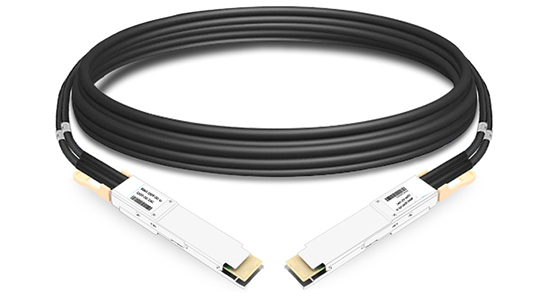
OSFP vs. QSFP‑DD 800G DAC Cables
While both OSFP and QSFP‑DD form factors support 800G, there are notable differences:
Size and Density
QSFP‑DD modules are smaller and allow higher port density on switch faceplates.Thermal Characteristics
OSFP’s larger housing aids in heat dissipation, often allowing higher thermal headroom.Adoption Trend
Many new switch platforms offer OSFP for 800G first, though QSFP‑DD is rapidly catching up.
When choosing between the two, consider port density requirements, switch compatibility, and chassis airflow characteristics.
Installation and Best Practices
Ensure Compatibility
Verify that both ends of your link support OSFP and the intended 800G speed.Bend Radius
Adhere to the minimum bend radius (typically 25 mm) to avoid cable damage.Labeling and Management
Color‐code and label cables at both ends to simplify maintenance in dense deployments.Environmental Checks
Confirm that ambient temperatures and EMI conditions fall within specified operating ranges.
Why Choose Fibrecross 800G OSFP DAC Cables?
At Fibrecross, we specialize in high‑quality, factory‑tested 800G DAC assemblies that deliver exceptional performance and reliability. Our offerings include:
Full‑Range Lengths
Passive and active variants from 0.5 m to 5 m to suit any rack layout.Strict Quality Control
Each cable undergoes automated Bit Error Rate (BER) and eye‑diagram testing to guarantee error‑free operation.Custom Branding and Logo Options
Tailor the cable jacket and heat‐shrink labels with your company’s artwork for seamless integration.Global Support and Fast Shipping
From our strategically located warehouses, we ship with guaranteed lead times to meet your project deadlines.
Conclusion
As data centers evolve toward ever‑higher speeds, 800G OSFP Direct‑Attach Copper cables offer a compelling combination of low cost, minimal latency, and operational simplicity for short‑reach interconnects. By understanding the technical nuances—passive vs. active designs, OSFP vs. QSFP‑DD form factors, and best practices for deployment—you can architect a future‑proof network that scales with your bandwidth demands. Choose a trusted partner like Fibrecross to ensure that your 800G DAC cables meet the highest standards of quality, reliability, and support.
Ready to elevate your data‑center performance? Contact Fibrecross today to learn more about our 800G OSFP DAC solutions and get a customized quote tailored to your network’s needs.


